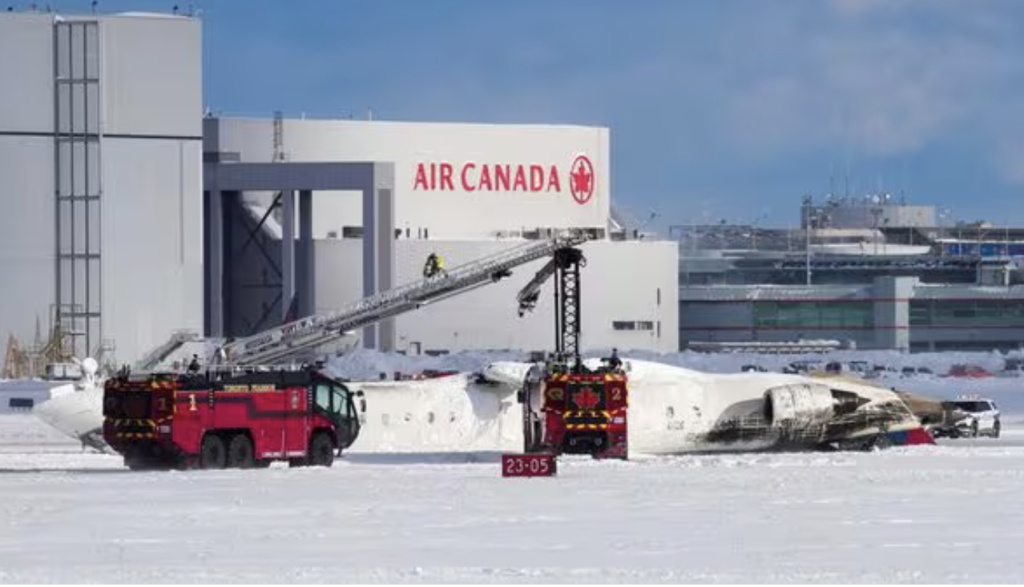Delta Plane Overturns Due to Severe Weather on Landing at Toronto Airport, 18 Injured

A Delta Air Lines regional jet overturned upon landing at Toronto Pearson Airport on Monday, amid challenging weather conditions following a snowstorm. The incident resulted in 18 of the 80 passengers on board sustaining injuries. Flight DL4819, originating from Minneapolis-St. Paul International Airport, was impacted by the weather, which included strong winds. Of the injured, three individuals—one of whom was a child—suffered critical injuries, while 15 others were transported to local hospitals. Delta later confirmed that some of the passengers have since been discharged.
The aircraft involved was a CRJ900, operated by Endeavor Air, Delta’s regional subsidiary. The plane, which can accommodate up to 90 people, was carrying 76 passengers and four crew members at the time of the incident. The CRJ900, built by Bombardier and powered by GE Aerospace engines, experienced significant damage, including the detachment of at least one wing. Authorities in Canada have launched an investigation into the cause of the accident.
Passenger John Nelson shared footage of the aftermath on social media, showing emergency responders spraying water on the overturned plane. In an interview, Nelson described the unexpected nature of the incident, stating that the aircraft landed and then suddenly flipped. He was able to unbuckle his seatbelt and safely make his way to the ground, while some others needed assistance.
At the time of the incident, Toronto Pearson Airport was experiencing difficult weather, with high winds and temperatures plummeting after a snowstorm had deposited over 22 cm (8.6 inches) of snow. The Delta flight landed at 2:13 p.m. after an 86-minute flight. Weather reports indicated gusting crosswinds and blowing snow, which may have contributed to the plane’s difficult landing.
While Toronto Pearson’s Fire Chief indicated that the runway was dry and no crosswind conditions were present, some pilots who viewed footage of the incident offered a different perspective, suggesting that gusty crosswinds may have been a factor. Aviation expert John Cox explained that the average crosswind was around 19 knots (22 mph) during the landing, which could have required continuous adjustments by the pilots. Investigators will work to understand why the aircraft’s right wing detached.
Michael McCormick, an associate professor of air traffic management, remarked on the unusual nature of the crash, noting that the inverted position of the aircraft made it unique. However, he also praised the remarkable safety standards in modern aviation, as all 80 people aboard survived—a testament to the engineering advancements and regulatory measures that help make such survivals possible. Previous similar accidents have had fatal outcomes, highlighting the significance of the outcome in this case.
